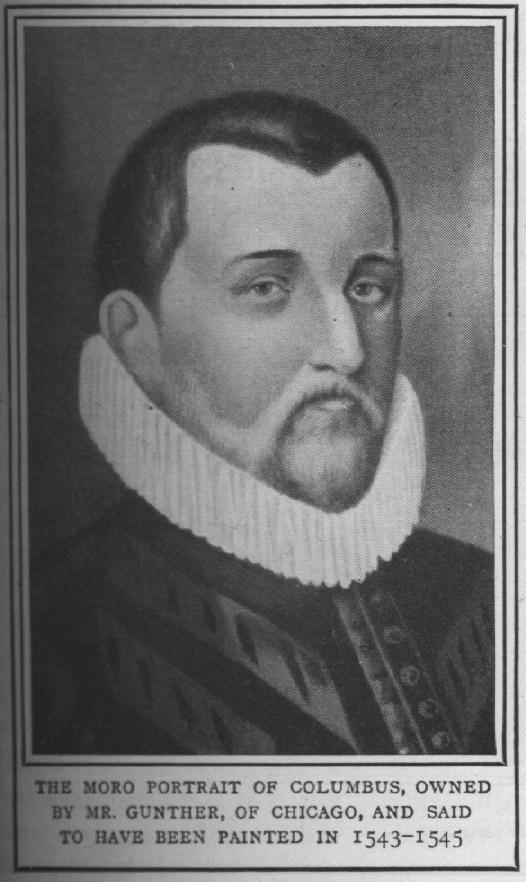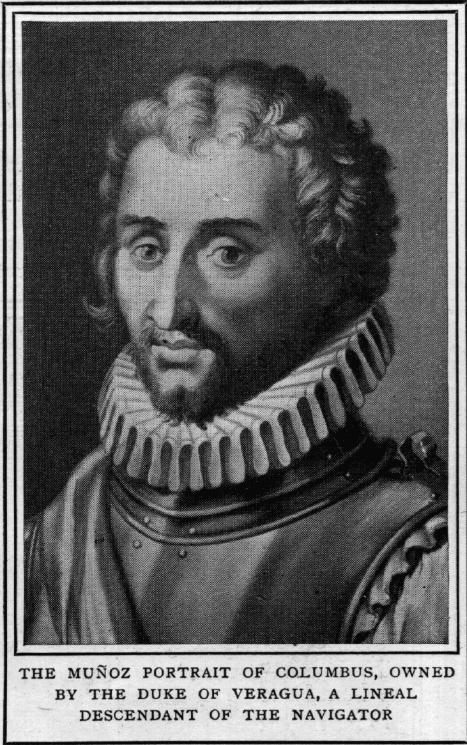| The Personal Appearance of Christopher Columbus | ||
THE JOMARD PORTRAIT
Any representation of Columbus which shows characteristics radically different from these cannot be accepted as a faithful portrait of the man.
Nine of the most interesting portraits are reproduced here. The first, on page 49, was found at Vicenza, in northern Italy, by M. Jomard, librarian of the National Library in Paris. It is attributed—just upon what evidence does not appear—to the brush of the great Venetian painter Titian. It is not at all
Whatever may be its claim to authenticity, this portrait is markedly unlike other representations of Columbus. It shows the "long visage" of the verbal description already quoted, but in other respects it suggests an Elizabethan courtier rather than any accepted impression of the great sailor's personality.
On page 50 is an engraving of a fine portrait now in the
Metropolitan Museum of Art, New York. If the recorded pedigree
of this picture is correct, it was painted in 1519 by Sebastiano
del Piombo, one of the great Venetian artists of the Renaissance.
It was presented to the museum by the late J. Pierpont Morgan,
who purchased it from the collection

THE MORO PORTRAIT OF COLUMBUS, OWNED BY MR. GUNTHER, OF
CHICAGO, AND SAID TO HAVE BEEN PAINTED IN 1543-1545
[Description: grayscale; head and shoulders portrait, with beard and ruff]

THE MUNOZ PORTRAIT OF COLUMBUS, OWNED BY THE DUKE OF VERAGUA, A
LINEAL DESCENDANT OF THE NAVIGATOR
[Description:
grayscale; head and shoulders portrait, with beard and ruff]
The next engraving, on this page, shows a portrait which belongs to the Duke of Veragua, a lineal descendant of Columbus. It was executed by a Spanish painter, Sebastiano Munoz, who flourished in the latter part of the seventeenth century. As the navigator had then been dead for nearly two hundred years, it cannot claim historical authority, and it is quite unlike the more generally accepted representations.
| The Personal Appearance of Christopher Columbus | ||